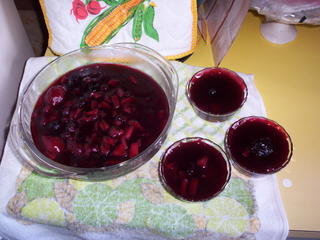The Brilliance of Biryani
 What a horrendous blogger I have been. Starving all ye food lovers for so long. Well, you can rest assured something finger-licking had been cooking all this while. Yes, nothing less than the spicy, aromatic delight from the Indian subcontinent--Biryani.
What a horrendous blogger I have been. Starving all ye food lovers for so long. Well, you can rest assured something finger-licking had been cooking all this while. Yes, nothing less than the spicy, aromatic delight from the Indian subcontinent--Biryani. If we look at its main ingredients, rice and meat (it could be any meat, but mutton and chicken are the most used in India), biryani doesn't come across as such a unique dish. After all, there are so many culinary cultures across the world that cook rice and meat together, aren't there? Yes, but biryani still remains unique because of the detail that goes into it--the type of rice grain (it has to be Basmati, the fine, long-grain variety grown in the Indian subcontinent), the different spices, the way in which the meat is cooked. Also interesting is to see the variety of this rice-meat phenomenon. Why? Because the biryani kept changing in taste and flavour as it travelled through different regions in India.
Although there are many stories about the origin of biryani, the most plausible one seems to be that it was brought to India by the Mongol conquerer, Taimur the Lame from Persia, when he invaded India in the 14th century. "Birian" means fried before cooking in Persian.
However, once it landed here, the biryani was nurtured and made more and more flavourful by the Mughal dynasty in India. From the northernmost reaches of India, to its southernmost shores, and from its eastern corners to its western boundaries, biryani is cooked everywhere, taking in the spices, cooking styles, and flavours of the regions where it's prepared.

Lucknow, which was a prime Mughal bastion in north India, saw the emergence of Lucknowi or Awadhi biryani. When the British invaded India, this biryani travelled to Calcutta (now Kolkata), the capital of Bengal, in eastern India. There, it entered the kitchen of ordinary folks, who replaced the meat with potatoes. And that's how biryani in Calcutta still has potatoes in it. Along with the meat and rice of course.
This heavenly delicacy made its journey down south, when the Mughal emperor, Aurangzeb invaded the south. He installed an authority figure called the Nizam ul Mulk there, who emerged as the ruler of the southern Indian province of Hyderabad later. It was in the Nizam's kitchen that the famous Hyderabadi biryani had its origins. There are two main kinds of H'badi biryani--Katchi biryani, in which the meat is marinated in curd (yoghurt) and then steamed with the rice; and Pakki biryani, which has the meat cooked first with all the different spices, and then the rice is simmered with the gravy of the cooked meat and is sealed in an earthen pot with saffron.
How will you know if you cooked the perfect biryani? Here are a couple of tips:
1) It should be aromatic. With Basmati rice and all those fragrant spices, that shouldn't be a trouble.
and here's the more important one:
2)Drop a handful of biryani (okay, a spoonful would do) on a hard surface. If no two grains of rice stick to each other, pat yourself on the back. Your biryani has cleared the age-old test.
Bismillah! (meaning, the beginning of all good things, in Arabic)
Sury




